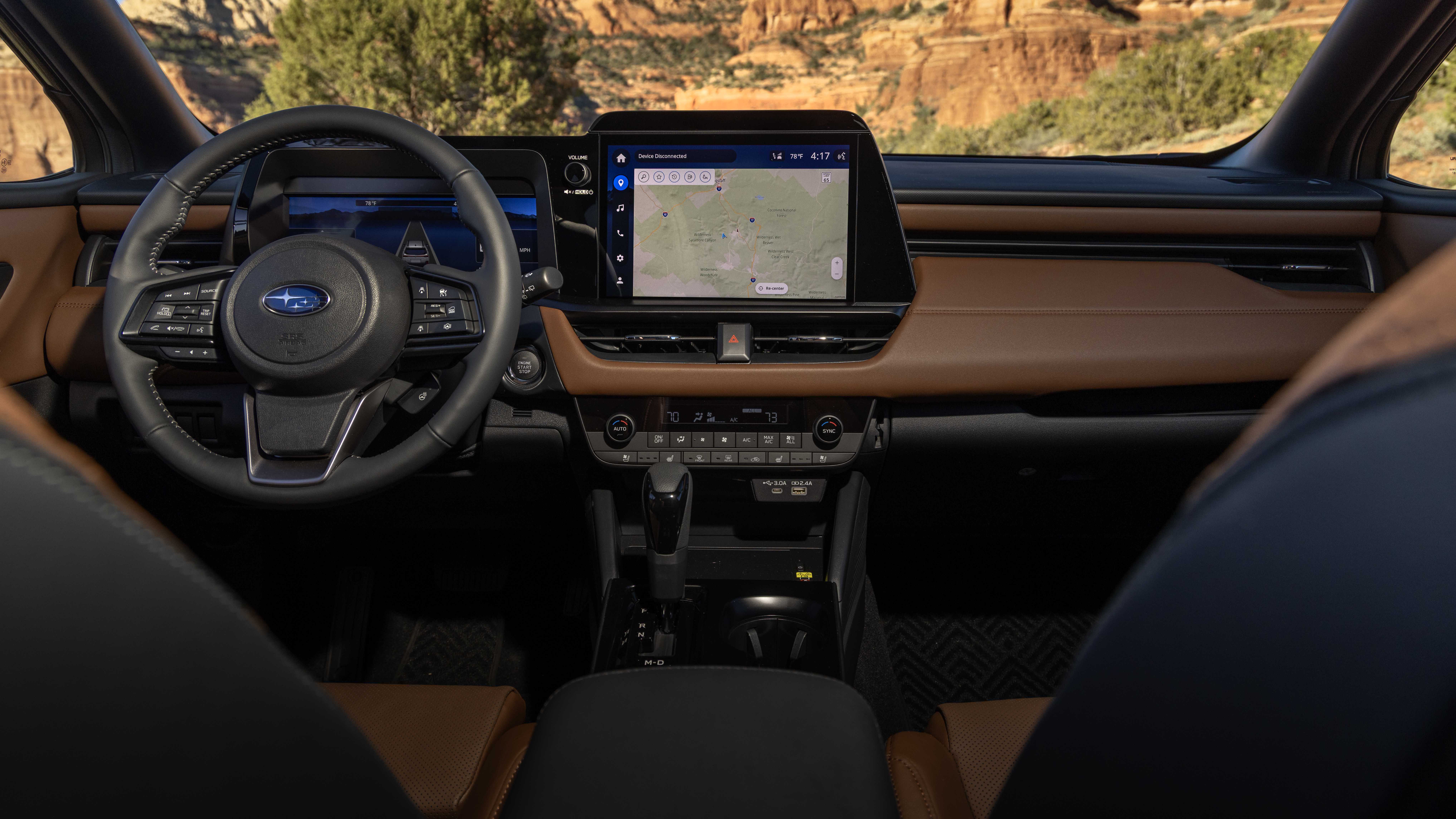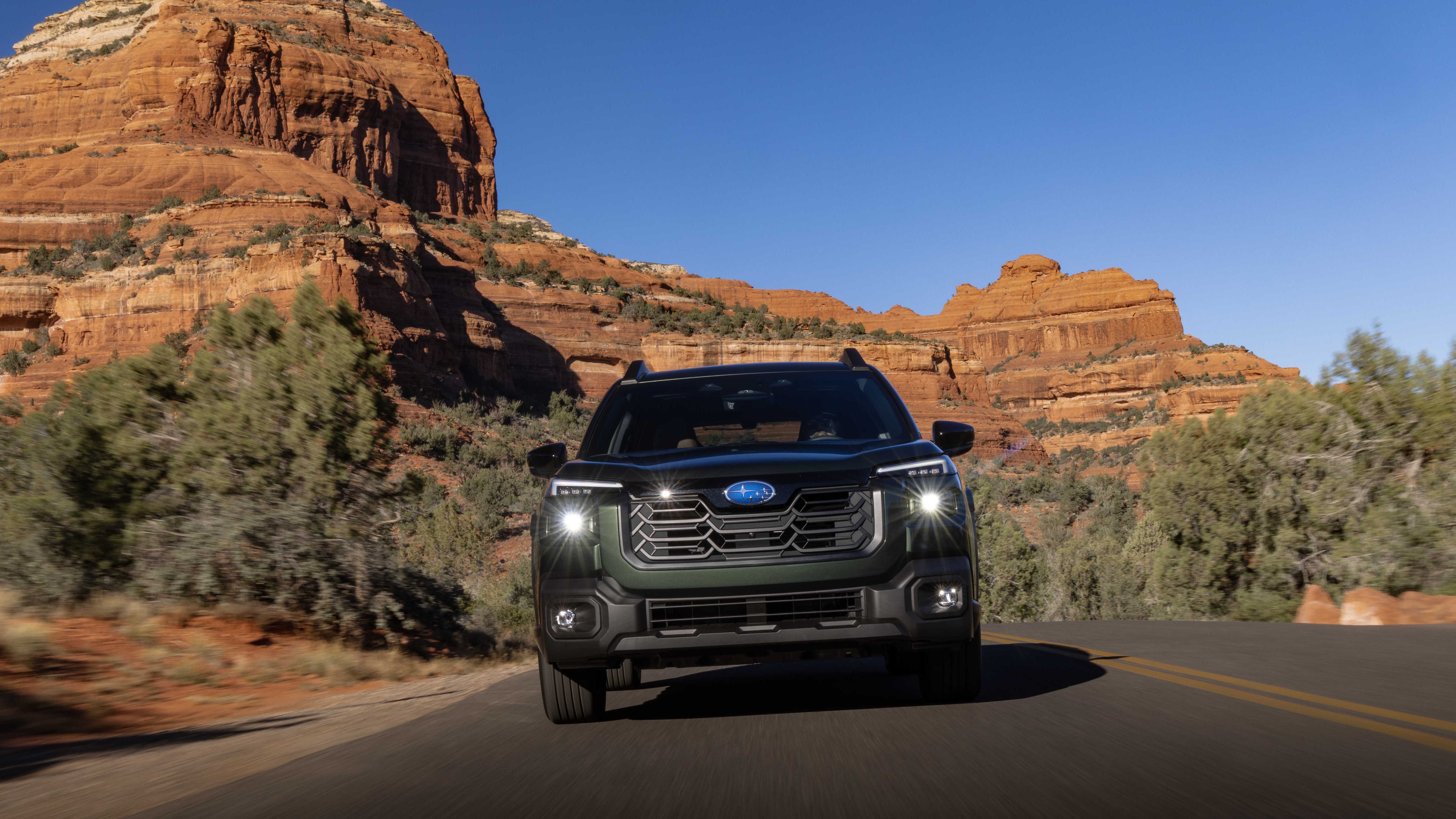
Subaru Outback (US) review
Interior
What is it like on the inside?
It’s doubtful you’ll want for more room in the Outback, as it was already quite comfortable, even before the designers found a few extra inches to spread around in this latest one. 34.6 cu ft of cargo space is readily available, and with the second row folded, it opens it up to 80.5 cu ft.
Up front, there’s great news for physical button fans. The previous large do-everything tablet screen is gone, with hard inputs around for important, frequently used functions like the parking/trail cameras, HVAC and so on. They’re great to have, though there is plenty to take in, so it tends to bring back the clutter all the in-screen menus were meant to mitigate, but that’s a trade-off we’re sure many people will be fine with.
The tablet is gone, but there’s still a touchscreen interface, naturally, and it’s now a 12.3in display with the usual bells and whistles. This and the digital driver display sit on the dash within an ill-fitting block of piano black plastic and looks hastily packaged. Once you spot the seams, they’re difficult to ignore, and you can’t help but wonder why Subaru couldn’t fit everything together with neat, flush lines.
Oh but the cupholders! Where some interior designs falter, cupholder versatility was given significant attention, with the Subie’s US team hauling suitcases of various drinking containers to Japan for its engineers to scrutinize/shock with our odd hydration habits. What we would give to be a fly on the wall while someone explains a ‘Big Gulp’ to them.
What kind of tech is included?
The 12.1in display is just what’s on the surface of a new suite of Subaru tech. The package has improved system response time, making it 2.5 times as quick as the outgoing version. Google services power things like voice control while Apple CarPlay and Android Auto compatibility remains.
Subaru’s ‘EyeSight’ driver safety suite has been expanded upon, bringing more accurate alerts when it comes to driver attention. Yes, this is a car that snaps at you if you take your eyes off the road for too long. In use, it’s fairly reasonable, and you’ve got to be really distracted for it to truly become a nuisance. Maybe just pull over at that point.
Speaking of, Touring models include a new hands-free highway driving assist that uses the car’s sensors as well as map data to allow Blue Cruise or SuperCruse-like services. It works at up to 85 mph - already a big ask for this car - and will do automatic lane changes when it’s deemed safe. Between this and the driver monitoring system, it can figure out how to take itself to the closest shoulder if it deems the person behind the wheel unresponsive.
Featured







